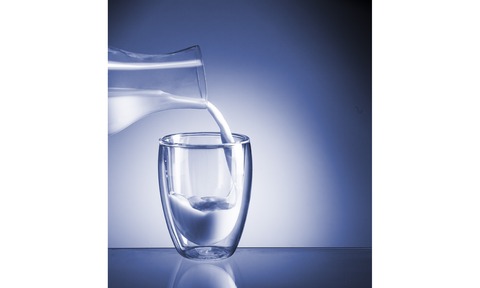
The suitability of the portable DMA 35 and DMA 500 density meters for quick quality checking raw milk is covered in an Application Report from Anton Paar.
Milk is a very complex liquid that is composed of an expansive diversity of different molecular species. There are many factors that affect the composition of raw cow's milk such as the animal‘s breed, age and physical state, as well as seasonal variations in the animal‘s diet. Therefore only an approximate milk composition of 87 % - 88 % water and 12 % - 13 % total solids can be given. Solids consist of approximately 4% fat and 9% solids-not-fat (SNF) such as proteins, lactose,
minerals, vitamins, and many more.
Because milk is a multi-component system, it is not possible to determine the concentration of one component - only density measurement. Yet, the density measurement of milk quickly indicates deviations from the normal milk composition due to, for example, addition of water. Addition of 10% water to the milk will result in a density decrease of approx. 0.003 g/cm3.
Infrared Analysis (IR) is a well-established and widely used method for routine analyses of e.g. milk proteins, fat or carbohydrates, density measurement is a useful control method for indicating deviations from the normal milk composition.
Milk density is influenced by different factors, one of them is the inclusion of air during delivery. As the density of milk changes over time as mentioned before, milk density must be measured on the spot to calculate an average density that represents the actual conversion factor. Experimental results that are obtained in the laboratory - under different conditions - cannot be compared with on-the-spot measurements.
The determination of density as a conversion factor from volume to weight can be carried out with the portable DMA 35 and DMA 500 density meters, since they measure milk density with high accuracy on the spot.






